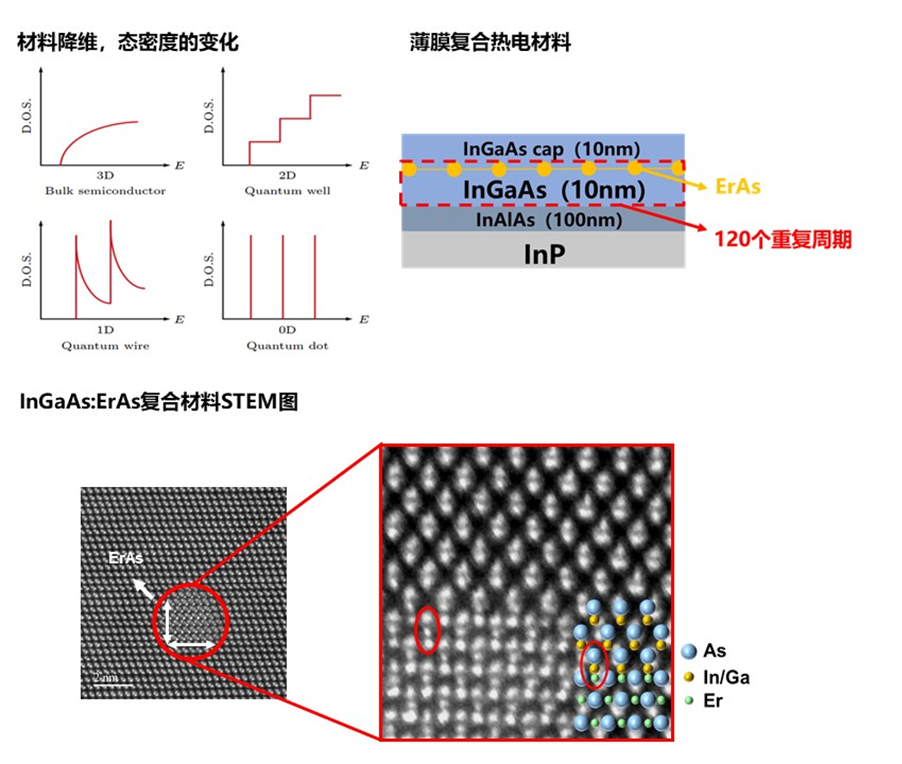Nano Thermal Transfer
Thermoelectric devices are functional devices that can directly convert thermal energy into electrical energy in both directions. Such devices have many advantages, such as miniaturization, integration, noise-free and environmental protection. The working principle of thermoelectric devices is mainly based on the thermoelectric effect of internal materials. The thermoelectric effect is: in a loop formed by two metals or semiconductors, when the temperatures of the two contact points are different, the loop will generate an electromotive force. When we evaluate the performance of thermoelectric devices, we mainly consider their own materials. When the thermoelectric figure of merit (zT) of the thermoelectric material is larger, it will show a stronger thermoelectric effect. At present, people are committed to finding thermoelectric materials with high zT values, and material dimensionality reduction is an effective way to increase the zT value. Low-dimensional thermoelectric materials will have many physical effects different from three-dimensional bulk materials, such as quantum confinement effect. Quantum confinement effect refers to the quantization of energy levels in one dimension or multiple dimensions. The electron transport perpendicular to the barrier direction is restricted due to the quantization of energy levels. For example, two-dimensional thin film materials are restricted in one dimension, one-dimensional nanowires are restricted in two dimensions, and zero-dimensional quantum dots are restricted in three dimensions.
Based on the above principles and methods, we prepared InGaAs thin film materials and doped ErAs quantum dots inside them, in order to actively regulate the thermoelectric figure of merit of InGaAs thermoelectric materials and obtain a good thermoelectric composite material.

1.Zhang, H; Yi, Y; Wang, Y; Hou, H; Meng, T; Zhang, P; Zhao, Y. Pixelated Micropolarizer Array Based on Carbon Nanotube Films. Nanomaterials, 2023,13(3), 391.
https://doi.org/10.3390/nano13030391 PDF File
2.Ting Meng; Yiwen Sun; Chen Tong; Peng Zhang; Dongyan Xu; Jinglei Yang; Ping Gu; Juekuan Yang; Yang Zhao ; Solid-State Thermal Memory of Temperature-Responsive Polymer Induced by Hydrogen Bonds, Nano Letters, 2021, 21(9): 3843-3848
https://doi.org/10.1021/acs.nanolett.1c00289 PDF File
3.Tong Chen; Pei Yu; Meng Ting; Zhang Peng; Yang Xiaochen; Zhang Yiyuan; Zhao Yang; Fitting study of multilayer thermal interface materials based on phase-sensitive transient thermal reflection system, Experimental Mechanics, 2021, 36(1): 51-61
https://doi.org/10.7520/1001-4888-20-012 PDF File
4.Hongmei Zhong; Yanan Li; Peng Zhang; Shouwei Gao; Bingying Liu; Yang Wang; Ting Meng; Yongsen Zhou; Huwang Hou; Chaohua Xue; Yang Zhao; Zuankai Wang ; Hierarchically Hollow Microfibers as a Scalable and Effective Thermal Insulating Cooler for Buildings, ACS NANO, 2021, 15(6): 10076-10083.
https://doi.org/10.1021/acsnano.1c01814 PDF File
[1] Zhao Yang, Meng Ting, Tong Chen. Application of hydrogel in thermal switch[P]. Anhui Province: CN202010101850.6, 2021-07-06.


 Current Location:
Current Location: